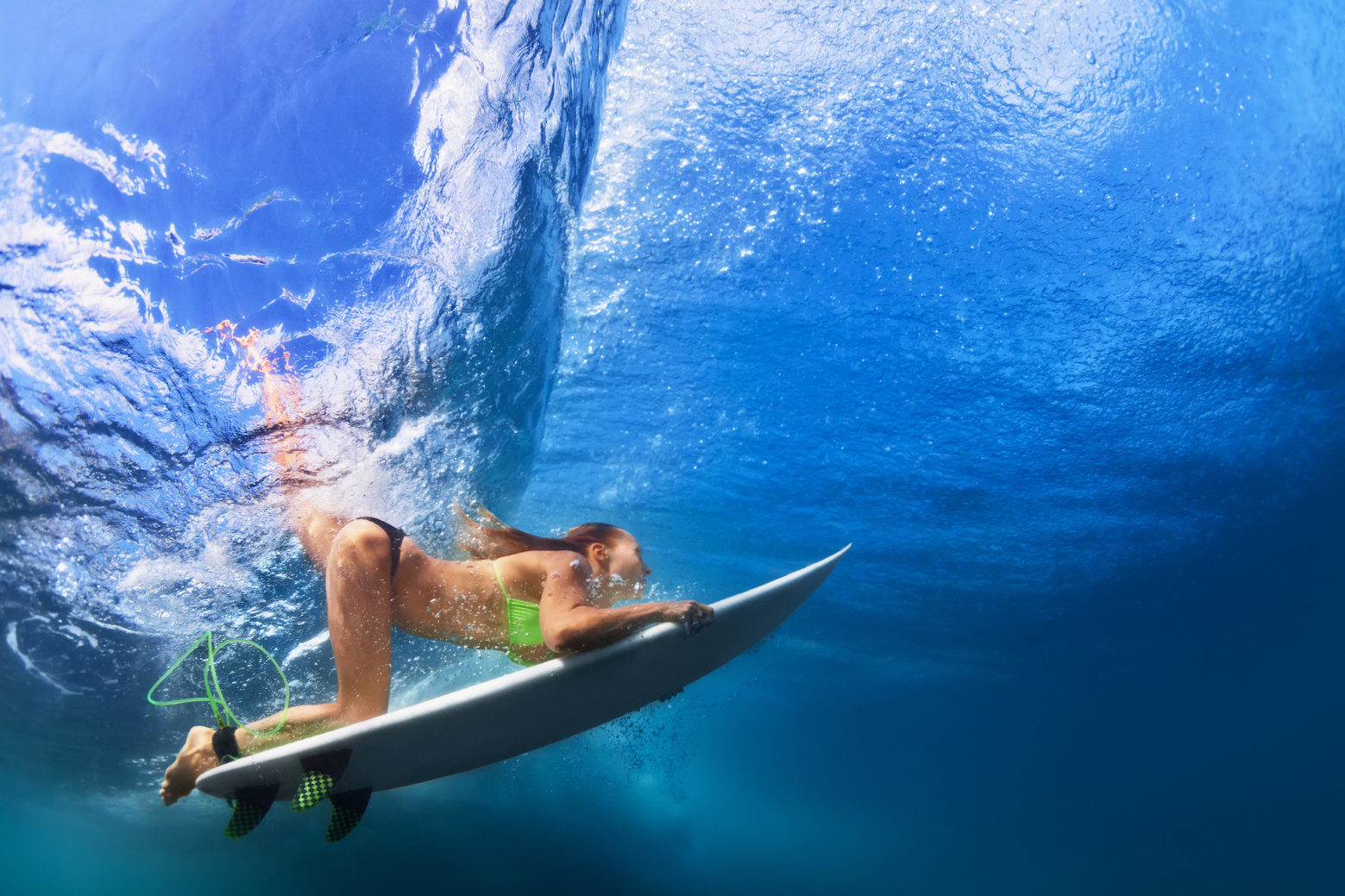Duck Divng is an essential trick that you will absolutely need to learn if you plan on riding a shortboard.
Here are some tips:
When the waves are small it is relatively easy to get outside. All you need is to get the nose of your surfboard over the crumbling wave.
But when the surf gets rough, you must know how to survive the impact zone. Duck diving is the most efficient way of not getting pummeled and pushed back by a crashing wave.
The duck dive is teamwork between body and board.
The goal is to form a kind of imaginary pendulum or arc that swings from air to water and air again while suffering the slightest interruption.
Many times, surfers are confronted with massive walls of white water rumbling towards the beach, and their only option is to go under the chaos.
Inspired by ducks and birds, the surfer’s duck diving technique mixes timing and body skills.
Occasionally, you are challenged by falling lips, semi-broken waves, thunderous closeouts, or gentle-breaking rollers.
It is important to stress that, in some situations, duck diving might not be an option. In those cases, bailing out is the most reasonable alternative.
You first need to practice on flat water – a pool, a lake, or a flat sea. It will take a lot of time to perform the perfect duck dive, but only a dozen waves to make a basic move.
The Duck Diving Technique
The trick is to penetrate deep underwater and use your knee and foot
to get yourself below the breaking or incoming wave because your biggest
enemy is always the board’s buoyancy.
Let’s break the duck dive down:
- Paddle vigorously toward the incoming wave;
- Before the wave reaches you (five to
ten feet), grab the surfboard’s rails with both hands about even with
the center of your chest; - Push off the board and extend your arms;
- Take a deep breath;
- With your hands on the rails, move your body weight slightly forward;
- Bury the nose of the board as deep as possible in the water;
- Point your head down;
- Bend and move your dominant leg forward (deck) and use that knee to push the board underwater;
- At the same time, use your other foot and toes to apply more downward pressure on the surfboard near the tail;
- Continue to push your body forward until the board is entirely underwater;
- Kick your back foot to propel you down under;
- If you can, open your eyes underwater to see the wave pass by;
- Slide your hands up the board, creating an upward trajectory;
- Whenever you feel that the turbulence is gone, arch upwards;
- Resurface and begin to paddle to avoid being dragged backward;
An efficient duck dive will save you a lot of energy and will get you
out in the lineup in no time, even on big wave surfing days.
Some surfers prefer to use both knees; others combine knee and foot, or knee or foot only to push through waves.
NOTE: The more volume your shortboard has, the more difficult the duck dive
will be – a Malibu will necessarily be harder to duck diver than a
standard shortboard.

